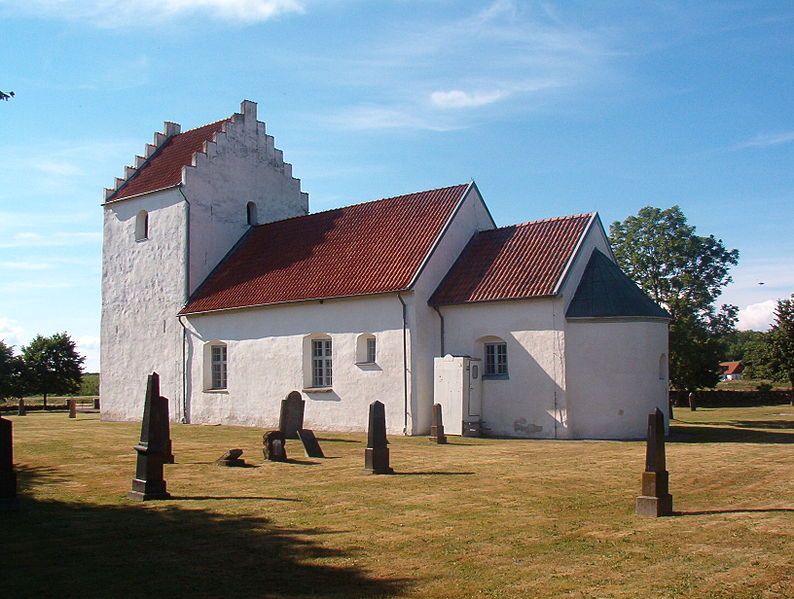Despite several reports during 2020 that the death toll of the coronavirus would not cause Denmark to have a higher mortality rate than normal, more people did die last year than in 2019.
Overall, though, the difference was not that much, with the death rate rising by just 1.3 percent – the equivalent of 687 more people.
Compared to the average of the previous three years, the rise was just 0.9 percent.
A heavy fourth quarter, particularly as the death rate started to soar in December, saw a 4.9 percent rise on the final three months of 2019 – and a 6.6 percent increase on the final quarters of 2017-19.
Slight population rise
In addition, the birth rate fell last year by 0.4 percent – the equivalent of 230 fewer new-borns. Compared to the last three years, this was a 0.7 percent decrease.
Nevertheless, despite the lower birth rate and rising mortality, the population of Denmark rose by 0.3 percent compared to 2019 and now stands at 5,840,045 people (as of January 1).
Even though immigration fell hugely in 2019, its 16.2 percent fall was more than matched by a 20.3 decrease in emigration, thus resulting in a net immigration of 10,920 people – approximately two-thirds of the average of the last three years.
Combined with an overall birth surplus of 6,292 people (13 percent lower than in 2017-19), the population accordingly rose.
Regional falls
The number of immigrants arriving in Copenhagen fell by 26 percent: the equivalent of 4,560 people. Aarhus and Frederiksberg Municipalities saw dips of about 1,000 people: 25 and 34 percent respectively.
Immigration rates in the municipalities of Ikast-Brande (down 50 percent) and Vallensbæk, Odder and Viborg (all more than 40) all fell heavily.
Leading the way with 2,418 fewer of its nationals arriving in 2020 was the US, followed by India (1,487) and Argentina (883).
Swedish numbers, in contrast, rose by 5 percent: the equivalent of 90 more migrating here.
Young smoker numbers halved: Smoke-Free Denmark here we come!
Young smoker numbers are in freefall to the extent that in three years the proportion of 18-19-year-olds who partake daily has fallen from 12 to 6 percent, according to figures released by Kræftens Bekæmpelse (the cancer society) and TrygFonden, whose ‘Smoke-Free Future’ initiative, which was launched in 2017, envisages no young people smoking by 2030. The trend among those aged 14-17 is pretty much the same. Recent measures, which have included a rise in cigarette prices and more schools forbidding smoking at lunchtime, have been credited with the fall in numbers. Most life-long smokers start before the age of 18, so the development is being widely hailed. The Coop supermarket chain, meanwhile, has confirmed a 20 percent fall in cigarette sales compared to 2019, and Salling Group a 10 percent decrease.
Coldest night for a decade as bigger waters start to freeze over
Horsens in central Jutland registered the lowest temperature since 2012 last night. Thermometers plunged to minus 20.6 degrees as Denmark woke up to its frostiest day yet. Across the country commuters braved a wind chill factor of between -10 and -20, and larger bodies of water are beginning to noticeably freeze over, including Copenhagen Harbour and sea waters by Hellerup. Staying in the capital, temperatures will start rising tomorrow on what will be Denmark’s first non-ice day for well over a week. Day-time temperatures thereafter will fluctuate between zero and 1 degrees, and there is a good chance it will snow next week, with 5 cm forecast for Wednesday and 4 cm for Thursday.
Decrease in number opting out of church membership
It would appear there aren’t too many Danish atheists left in the closet, as last year saw the lowest number leave the Danish National Church for 14 years, according to Danmarks Statistik. Just 9,053 people left, which is good news for their monthly income as they no longer have to pay a small percentage towards the church. On the other hand, they won’t be able to take advantage of free services connected with births, deaths and marriages. Of the 9,053 who left, over 50 percent were aged 18-33. In 2016, a mighty 25,000-plus people left the church. Nevertheless, 74 percent of the population remain members. In 1986, the share was 88 percent. Some 8 percent of immigrants and descendants of immigrants are members, and from non-western countries this share shrinks to 3 percent.
Church wedding numbers down heavily due to coronavirus
The number of marriages between a man and a woman in 2020 fell by 7 percent, and there was a 23 percent fall in the number of church weddings: from 9,800 to 7,600, according to Danmarks Statistik. In total, church weddings between a man and a woman accounted for 27 percent of all marriages. The proportions for lesbians and gays were 21 and 16 percent respectively.
A perfect marriage: Diamond wedding numbers were monumental in 2020
Around 4,400 people in Denmark celebrated their diamond wedding anniversary in 2020 – the highest ever number in a calendar year, according to Danmarks Statistik. The total corresponds to one in eight of the couples who got married in 1960. The strong showing reflects the increased life expectancy of couples as well as the tendency to get married at an early age back then.
Divorce rate unchanged despite fears lockdown was hurting relationships
Despite fears that the lockdown in Denmark was leading to more couples separating, the number of divorces in Denmark in 2020 was on a par with the average of the last decade, according to Danmarks Statistik. In total, there were 15,700, which is 1 percent below the average. However, there were 49 more divorces than in 2019.
10 October 2020 the most popular date for a wedding last year
One date last year ended up being not only the most popular date of 2020 to get married, but the fourth most popular this century. Couples were drawn to the decimal beauty of 10-10-2020, and in total 1,800 happy pairs got hitched on October 10.















